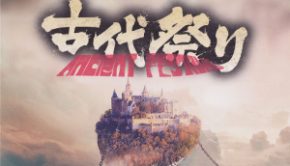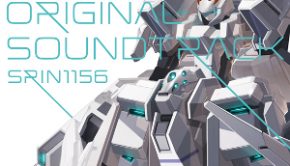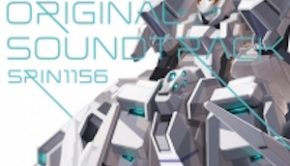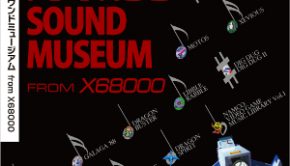Streets of Rage Original Soundtrack
 |
Album Title: | Streets of Rage Original Soundtrack Box (Bare Knuckle Original Soundtrack) |
| Record Label: | Wavemaster | |
| Catalog No.: | WM-0691/4 | |
| Release Date: | June 27, 2012 | |
| Purchase: | Buy at CDJapan |
Commentary
About the Bare Knuckle series’ sound – Yuzo Koshiro (Ancient Ltd)
My Experience Adopting Club Music
The Bare Knuckle (Streets of Rage) series’ BGM adopted a part of the sound of club music. When the first game was in development, around 1990, the club scene in Japan was gradually spreading into house and techno, and I had been listening intently, so I began to think about taking the sound of this genre that had had next to no connection to game music and being the first to bring it in.
But in Japan, these genres were still limited to a small group of fanatics, and I was afraid that it wouldn’t be received well. On the other hand, in North America [Note 1] and Europe, where sales of the Mega Drive were very favorable, the music charts and music shows like those on MTV seemed to show that this kind of music had really caught on amongst the younger generation. As a result, I decided to adopt this sound based on its appeal to them in particular.
Challenging a New Genre via FM Synthesis
The most important element in getting the sound of the club music of the time was timbre, first and foremost. In particular, the sound of the drums and percussion that was used the most, aside from live recorded drums, came from the Roland’s rhythm machines [Note 2], and it wouldn’t be an exaggeration to say that that sound defined the genre.
However, it would be very difficult to imitate using the FM synthesizer [Note 3] built into the Mega Drive console, so I used the built-in PCM (ADPCM) in conjunction with the FM synth to achieve it. The kick and snare were handled by the PCM (both sampled from an actual TR-909), and the FM synth replicated the metallic sounds, the hi-hat and cymbal, and other percussion like congas. I’m quite proud of the conga sound in particular, which was realized through detailed FM synth and MML [Note 4] programming. Outside of the rhythm section, the unique, piercing sounds of analog synthesizers like the Roland TB-303 [Note 5] have an important role, and it was also a challenge to create that timbre. It takes a good deal of painstaking work to recreate the sound of analog synths on FM synth, which lacks filter circuits, but I accomplished it using the same programming techniques as with the rhythm section.
Replicating Breakbeats and Phrase Sampling
When I talk about breakbeats and phrase sampling, I’m referring to the DJ method of taking old Jazz recordings and reusing phrases from the drums, bass, and winds, which had just started to grow in popularity at the time. The fastest way to replicate this would be to play the samples via PCM, but the amount of space afforded by game consoles of the time was incredibly small, so it would have been impossible to store lots of phrases or even a few longer ones. So I imitated them through MML programming, and this had the added benefit of being able to use the phrases I wanted without worrying about copyright infringement. So I went ahead and entered drum and bass phrases like the ones I found, and achieved the right atmosphere.
The Music that Inspired Me
I was going to clubs all the time back then. Around the time of the first Bare Knuckle game’s development, I was frequenting a club near the US Army’s Yokota Air Base, and the hip-hop and R&B that was popular there had a particularly big influence on me. In the popular Western music scene of the era, this kind of black music existed alongside techno and house, and it was all growing together, so I naturally began to think about taking them all in. I was particularly floored by the swinging rhythms that characterized breakbeats, and this one rhythm pattern that was taking a generation by storm at the time, the “ground beat” [Note 6], was my favorite, so its influence showed up clearly in the title music for Bare Knuckle.
About the Sound of Bare Knuckle II
Bare Knuckle II‘s music was influenced more by techno and its related genres than black or house music. That is to say, 1992, when the game was being developed, was the height of the Juliana boom [Note 7], so I was heavily influenced by its associated genres, rave and hardcore techno [Note 8]. Motohiro Kawashima, who would work on the series starting with this game, introduced me to the various club sounds of the time, and the results of our combined research are strongly reflected in the methods we used to write the music. To achieve that kind of radical, dynamic sound on the Mega Drive we made a number of improvements to the FM Drivers and the MML editor. As my company, Ancient, also handled the development of the game itself, we were able to boil down all of the game’s elements to fit together and with its music and sound effects, it was one of the most modern and polished games on the Mega Drive at the time.
About the Sound of Bare Knuckle III
With Bare Knuckle III, the sound became even more aggressive. The elements of house and black music receded into the background, and we focused on an extreme sound derived from hardcore techno. So-called Rotterdam Techno (more correctly called Gabber) was popular in the clubs in Maki [Note 9]. It features a kick with audible distortion and a high BPM, and its influence on the game can be heard most clearly in Mr. Kawashima’s track “Bulldozer”. Also new to the series was the innovative method of “automated composition” that I introduced. Just as the name implies, it is a computer composing automatically, and I developed the method myself to allow the incorporation of phrases that a human couldn’t possibly imagine. There was a similar automated composition program at that time that ran on the Apple Macintosh called M, and I was inspired by that as I created my own method. I implemented it into the MML editor, and came up with a number of odd phrases for the game.
Production Environment
The first two Bare Knuckle games’ soundtracks were written on the NEC PC-88 series, while III’s was written on the same company’s PC-98 series [Note 10]. The MML editor was one I developed called MUCOM, which used to be sold by Tokuma Shoten under the name MUSIC LALF. The 88 ran on Mr. Kamitama’s Alpha-DOS OS, which provided an extremely flexible production environment without the memory limitations of standard BASIC editors. On the PC-98 I upgraded MUCOM’s sound drivers and integrated the automated composition program I talked about earlier. For the FM sound chip I used a “Speak Board” and for the editor I used MIFES. Without building up from and maintaining these kinds of primitive working environments, we would never have been able to get the sounds we imagined.
In Conclusion
The music of the Bare Knuckle series marked a turning point for me personally. Game music to that point had been based on rock or fusion, and the club sound did not fit in. Although it was rare at the time, today there are many listeners who support the genre. I hope that you experience a little bit of the evolution of club music through these CDs.
Notes
1: In Japan, 3.5 million Mega Drives were shipped over the course of the system’s lifespan, but in North America alone that number was 20 million.
2: The most famous models are the Roland TR-606, TR-707, TR-808, and TR-909.
3: The Yamaha YM2612 chip. FM synth can play back up to six channels simultaneously. The version in the Mega Drive was a specially modified version which allowed you to choose whether to use six channels of FM synth or five channels of FM synth and one of PCM. The Bare Knuckle series used the latter.
4: MML is an abbreviation of Music Marco Language, a simple language for making computer-readable scores.
5: A bass synthesizer released in 1982, still the most widely employed in club music today. Genres called “Acid” or “Psychedelic” usually use it, or something that sounds similar.
6: Soul II Soul’s “Keep On Movin'” and Enigma’s “Sadness (Part I)” are the most famous examples. It had a massive influence on my work.
7: Juliana’s Tokyo was the nightclub that defined the early 90s Bubble Economy, and the sight of its women with their one-length hair, their form-fitting clothing, and their feathered fans became a cultural phenomenon.
8: L.A. Style’s “James Brown is Dead” and T99’s “Anasthasia” were big hits at the time.
9: Its influence also appeared elsewhere in the game music of the time, as in Ridge Racer‘s “Rotterdam Nation by Mr. Shinji Hosoe.
10: The 88 was a PC-88MA. The 98 was an Epson-made PC-486 NEC-compatible model.
Translated by Ben Schweitzer. Edited by Ben Schweitzer and Chris Greening. Please do not republish without written permission.
Posted on June 27, 2012 by Ben Schweitzer. Last modified on March 9, 2014.














